Earth’s Doppelgängers: A List of Earth Like Planets

“There are 2 trillion galaxies in observable universe. For all 2 trillion galaxies, each one has 100 billion stars. Next, one in five stars has an Earth-like planet. That means there are as many as 40 billion Earth-sized planets.”
If you look at the numbers, things are looking pretty good for other Earth-like planets. Doesn’t it? But you still have to ask:
How come we’ve never been contacted by alien life forms? The odds aren’t as good as we think.
And there are a couple of reasons for that. Today, let’s look at Earth-like planets.
Chapter 1. Cosmic Ingredients for Earth-like Planets
Earth-like planet wish list
As far as we know, we’re the only planet with life on it. But what’s special about Earth? If you could make a list of cosmic ingredients to make an Earth-like planet, here are some of the characteristics they would need.
The ingredients for life
Just because a planet has all the properties of Earth, it doesn’t guarantee life. We have a basic understanding of how life forms. A planet has to be in the Goldilocks zone with a surface temperature that could be suitable for liquid water.
It’s necessary to have a primordial soup where molecules come together and become life. But we don’t know if that’s sufficient. For example, we don’t know if putting water, amino acids and an energy source like lightning or the sun does create life.
Life has to self-replicate, metabolize, and evolve. Scientists have tried to replicate primordial soup in test tubes without success. Not a single scientific experiment has been successful at duplicating life.
Hunting for exoplanets
The Kepler satellite is a space-based telescope to search for one part of the galaxy for potentially habitable planets. So far, the Kepler mission has confirmed over 2,000 planets.
We don’t know if life exists on these planets. But these planets fit the mold for the Earth-like planet wish list.
Among the 2,000+ planets, the Kepler mission discovered 3 super Earth-size planets (Kepler-62f, Kepler-62e, and Kepler-62c) in the habitable zones of their stars. Each of the 3 planets is less than twice the size of Earth.
Chapter 2. Earth’s Doppelgängers
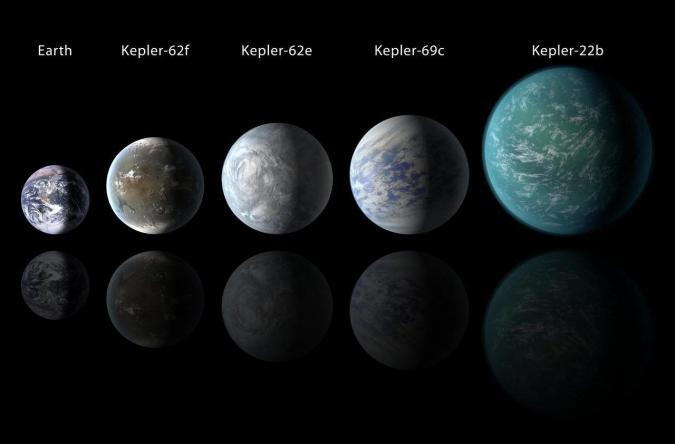
Kepler-62f (KOI-701.04)
Kepler 62 is a 5-planet system about 1200 light-years away from Earth in the Lyra constellation. The host star is smaller and cooler than our sun. The first 3 planets closest to the sun are too hot and inhospitable. Next, is the planet Kepler 62f which is in the inner hospitable zone. Kepler-62f is the smallest of the habitable planets.
It’s about 40% larger than Earth. It completes a full revolution around its host star every 267 days. We don’t know if it contains water. But it’s likely covered in rocks.
Kepler-62e (KOI-701.03)
Kepler-62e revolves around the same start as Kepler-62f. The Lyra constellation is also about 1200 light-years from Earth.
In a 5-planet system, it’s the second outermost planet in the hospitable range (fifth away from the host star). It’s 60% larger than the size of Earth and orbits every 122 days.
Kepler-69c (KOI-172.02)
2700 light-years from Earth is a two-planet system around a star called Kepler 69. Star is the same type and similar to our sun. Although it’s slightly smaller and cooler. Inner planet Kepler-69b orbits every 13 days.
Much hotter than Mercury. Outer planet Kepler-69c is about 70% larger than Earth. Orbits every 240 days. It is the smallest planet found in the habitable zone.
Gliese-667Cc (GJ 667Cc)
Gliese 667 C is a triple star system approximately 23.6 light-years away in the Scorpius constellation. Its radius (6,095 mi) is 50% larger than Earth. Gliese 667 C orbits the red dwarf star Gliese 667 C with an orbital period of 28.1 days.
Because of its host star luminosity, Gliese 667 C receives similar electromagnetic radiation to Earth. This planet was first discovered by the European Southern Observatory in 2011.
Gliese-581c (Gl 581c)
In the Gliese-581 system, scientists discovered a second rocky planet within the habitable range. Gliese-581c is classified as a Super-Earth about 5.5 times the size of Earth.
It’s likely tidally locked so there would be a band around the planet where life could theoretically exist. This terminator zone is where the extreme heat and cold balance each other out forming an area able to support life.
Proxima Centauri b
Alpha Centauri is a triple star system closest to our own. One of its stars is Alpha Centauri C (Proxima Centauri) which is a small red dwarf star. In the habitable zone is a rocky planet (Proxima Centauri b) close to the size of Earth.
Not only can liquid water persist due to its proximity to Proxima Centauri, but it’s also the closest exoplanet to Earth. Because of its close proximity to Earth, NASA plans to launch a probe towards Alpha Centauri in 2069 in search of biosignatures.
Chapter 3. Drake Equation
Is there life outside Earth?
The Drake equation measures the possibility that aliens will one day contact Earth. It multiplies the following factors and probabilities in its equation:
- Number of stars.
- Fraction of stars with Earth-like planets.
- Life exists on the planet.
- Alien life form is intelligent with technology.
- We overlap during the same existence.
By breaking up each factor into separate pieces, we stack their probabilities. It’s like calculating the chance of rolling a dice 10 times in a row.
What are the odds?
Overall, there are two outcomes of the Drake equation. If N<1, this means we are alone in the universe. And if N>1, then there are potentially one or several life forms that will contact Earth. Because the assumptions vary for each variable, there is a range of results for the Drake equation.
You can consider star formation and the number of Earth-like planets as being well-known. But space is filled with harmful radiation. For example, the center of galaxies such as black holes pumps out enormous amounts of radiation.
This rules out a lot of planets. But the largest uncertainty belongs to the evolution of life, alien intelligence, and their overlap during our own existence. Overall, we really don’t have a clear estimate of these factors.
Earth’s Doppelgängers: A List of Earth-Like Planets
Is there life outside of Earth? There is no way to know for sure, but there are many reasons to believe that life exists outside of Earth.
Scientists are actively searching for Earth-like planets in the habitable zone of other stars, known as the “Goldilocks zone,” where conditions might be right for liquid water and, potentially, life as we know it.
If you have any questions or comments about Earth-like planets, please feel free to contact us below.

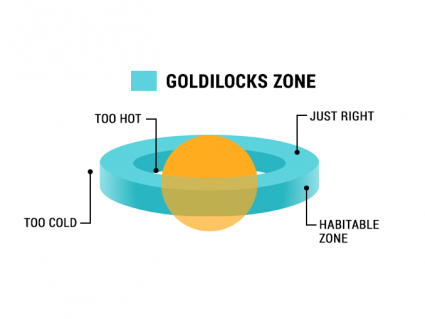
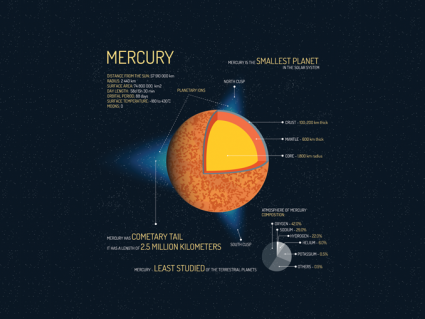

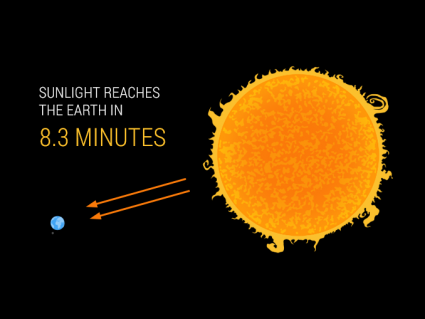

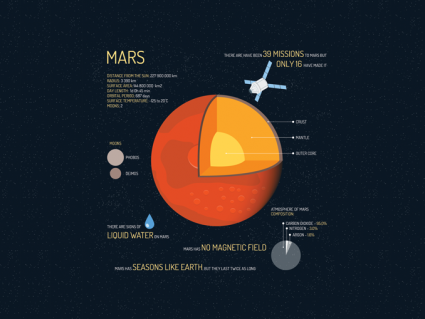
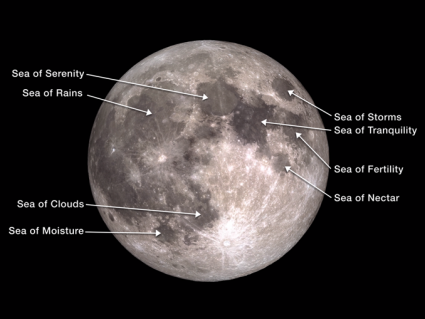

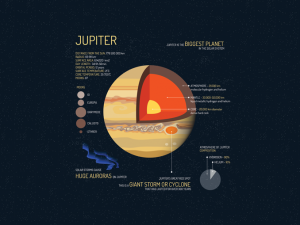

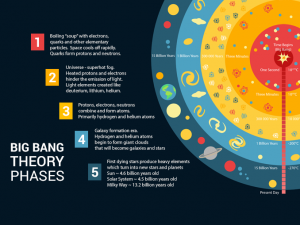
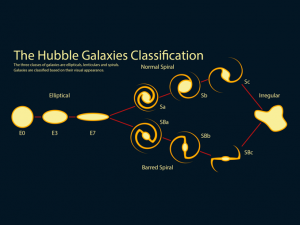
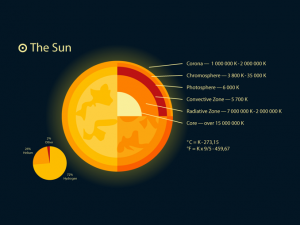
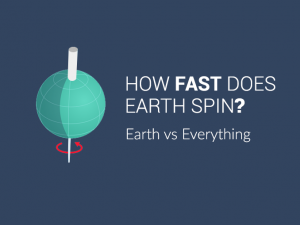
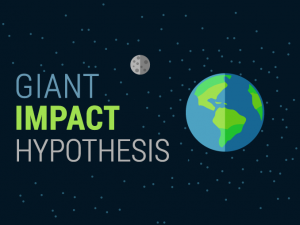
The fact that we exist is all the proof I need. There is and was life throughout the universe,and,always will be.
The so called aliens have always been part of Earth’s and humankind’s history. Artifacts, paintings show it. Stories and so called legends. Why look for those who have always been here? And would it change? Would we become better, more compassionate or happy?
Hi I think that your information is great as I always thought that there were earth like planets out there.
We are definitely not alone
I reported to astronomy in 2022
The math in the initial quote does not work out, if there are 2 trillion galaxies and each has 100 billion stars which of every 5th star has an earth-like planet, then there are 40 sextillions (40 000 000 000 000 000 000 000) earth-like planets, not 40 billion (as stated in the quote). The quote is of by a factor of a trillion.